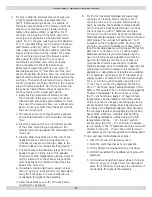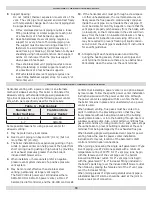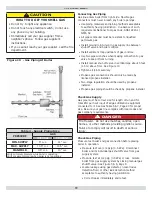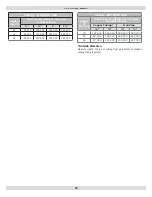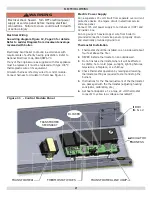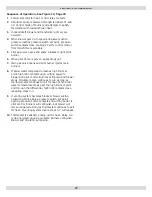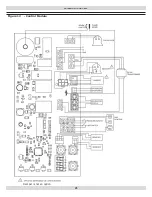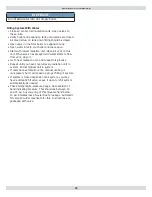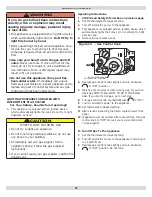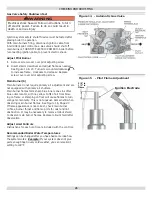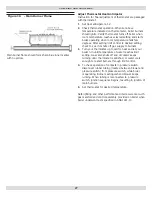
12
Removing Existing Boiler From Common Venting
System
When an existing boiler is removed from a common
venting system, the common venting system is likely to be
too large for proper venting of the appliances remaining
connected to it.
At the time of removal of an existing boiler, the following
steps shall be followed with each appliance remaining
connected to the common venting system placed in
operation, while the other appliance remaining connected
to the common venting system are not in operation.
1.
Seal any unused openings in the common venting
system.
2.
Visually inspect the venting system for proper size and
horizontal pitch and determine there is no blockage or
restriction, leakage, corrosion and other de
fi
ciencies
which could cause an unsafe condition.
3.
Insofar as is practical, close all building doors and
windows and all doors between the space in which the
appliances remaining connected to the common venting
system are located and other spaces of the building.
Turn on clothes dryers and any appliance not connected
to the common venting system. Turn on any exhaust
fans, such as range hoods and bathroom exhausts, so
they will operate at maximum speed. Do not operate a
summer exhaust fan. Close
fi
replace dampers.
4.
Place in operation the appliance being inspected. Follow
the lighting instructions. Adjust thermostat so appliance
will operate continuously.
VENT INSTALLATION
5.
Test for spillage at the draft hood relief opening after 5
minutes of main burner operation. Use
fl
ame of a match
or candle, or smoke from a cigarette, cigar, or pipe.
6.
After it has been determined that each appliance
remaining connected to the common venting system
properly vents when tested as outlined above, return
doors, windows, exhaust fans,
fi
replace dampers and any
other gas-burning appliance to their previous conditions
of use.
7.
Any improper operation of the common venting sys-
tem should be corrected so the installation conforms
with the National Fuel Gas Code, ANSI Z223.1/NFPA
54. When re-sizing any portion of the common venting
system, the common venting system should be re-sized
to approach the minimum size as determined using the
appropriate tables in Chapter 13 of the National Fuel
Gas Code, ANSI Z223.1/NFPA 54.
8.
It is recommended that existing gas vents be checked
to be sure they meet local codes.
Summary of Contents for XEB II Series
Page 23: ...23 WIRING DIAGRAMS Figure 12 Control Module Damper is not an option...
Page 37: ...Date Service Performed Company Name Tech Initials Company Address Phone...
Page 38: ...NOTES...
Page 39: ...Date Service Performed Company Name Tech Initials Company Address Phone...
Page 40: ...DUNKIRK BOILERS 2201 Dwyer Avenue Utica NY 13501 web site www ecrinternational com...

















